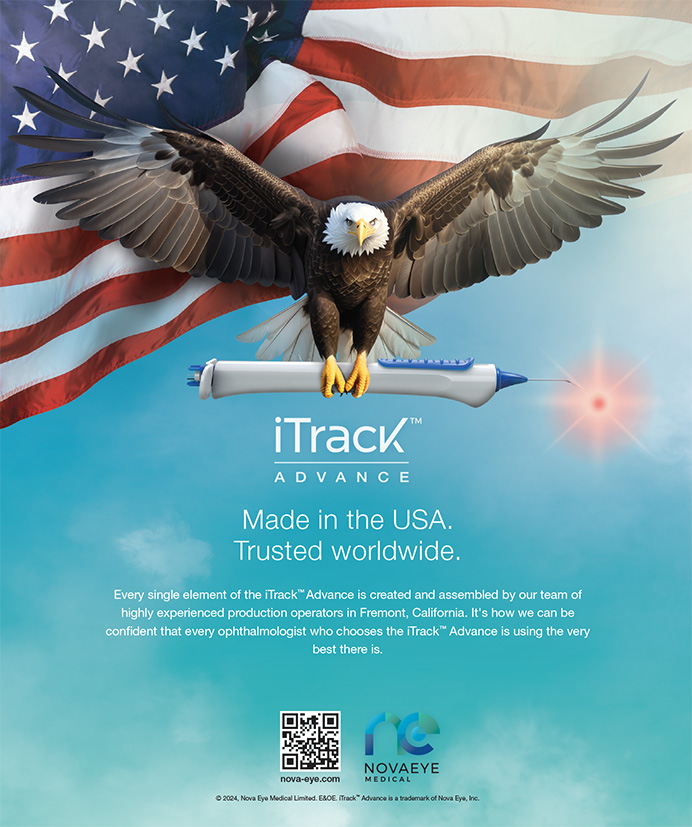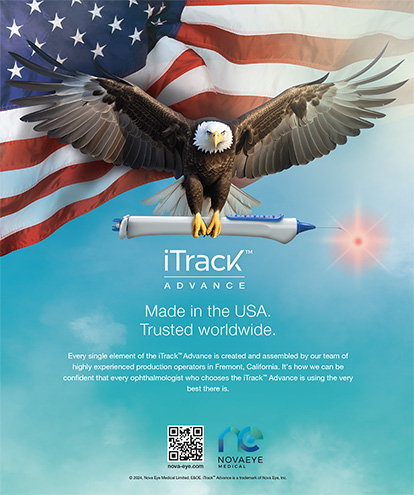Cataract Surgery | Aug 2005
The Soft Nucleus
Tips for avoiding capsular tears and ruptures.
Steven H. Dewey, MD; Guy E. Knolle, Jr, MD, FACS; and Michael E. Snyder, MD
STEVEN H. DEWEY, MD
Upon trying to distinguish a soft nucleus in 2005, I am struck by the number of cases that qualify when I am using micropulse energy modulations and advanced fluidics. If I set a criterion based on the estimated phaco time (say less than 0.1 seconds estimated phaco time), then many cases of 2+ nuclear sclerosis can be classified as soft.
If I rely on history, the truly soft lens belongs to a younger patient who tends to require more sedation and who has a softer globe in general than the elderly. The anatomic layers of the lens are less distinct. Because the hydrodissection usually deviates deeper into the lens, it flips the nucleus out of the capsule without completing the cortical-cleaving wave. Once the nucleus is in the anterior chamber, I typically keep my pressure on the foot pedal light and aspirate the nucleus with little phaco power (usually none). Given how easily these anterior chambers distend and collapse, I guard the posterior capsule with my second instrument, a very blunt Goldberg Nucleus Rotator (Rhein Medical Inc., Tampa, FL). Rarely do I try an endocapsular technique.
If hydrodissection is a problem, then residual cortex is a significant issue. My technique for cortical removal has been to irrigate the cortex with a 26-gauge McIntyre-Binkhorst J-cannula. I place the tip of the cannula between the residual cortex and the capsule to create irrigation of sufficient force to strip the cortex from the capsule. This technique is like hydrodissection but after nuclear removal. Most of the time, the cortex simply flows out of the eye with the irrigation, and this technique is useful for power washing the posterior capsule as well.
GUY E. KNOLLE, Jr, MD, FACS
When using the I/A tip, one can loosen the cortex under the incision by (1) going to 5mmHg on the capsular-vacuum setting, (2) scrubbing the posterior capsule free of cortex at the incision, (3) burying the 0.3-mm tip in the remaining equatorial cortex and moving it around vigorously, and (4) returning to maximum I/A. By alternating these two settings, the surgeon can frequently aspirate the loosened cortex under the incision with little danger of engaging the posterior capsule. It is very important to keep the port pointed away from the posterior capsule and buried in the cortical mass when switching abruptly to maximum I/A from the capsular-vacuum setting.
MICHAEL E. SNYDER, MD
In the presence of a very soft lens from a young cataract or a white, intumescent cataract, the endolenticular pressure may be high, and there is a tendency for the capsule to splay open instantly upon the cystotome's initial entry. As a result, it may be impossible to maintain a continuous capsulorhexis, which, in some cases, can extend radially or even around to the posterior capsule. The “pop” may occur as the high endolenticular pressure is suddenly decompressed into the anterior chamber.
A few steps can minimize the problem. First, create a soft shell by filling the anterior chamber with viscoelastic. Stain the anterior capsule with indocyanine green or trypan blue (necessary in the soft white lens) and aspirate excess dye. Next, use a highly cohesive viscoelastic such as Healon5 (Advanced Medical Optics, Inc., Santa Ana, CA) to pressurize the anterior chamber to a level greater than the endolenticular pressure. Watch for a decrease in the convexity of the anterior capsule. You can then introduce a 25-gauge needle through the paracentesis and place it through the central anterior capsule. Immediate withdrawal of the plunger will aspirate liquid or soft, young cortex from the confines of the bag, thereby decompressing the endolenticular pressure. The capsule will immediately become even less convex. You can place additional cohesive viscoelastic and complete the capsulorhexis easily with a microforceps.
Steven H. Dewey, MD, is in private practice with Colorado Springs Health Partners in Colorado. He states that he holds no financial interest in the products or companies mentioned herein. Dr. Dewey may be reached at (719) 475-7700; sdewey@cshp.net.
Guy E. Knolle, Jr, MD, FACS, is in private practice in Austin, Texas. He states that he holds no financial interest in the products or companies mentioned herein. Dr. Knolle may be reached at (512) 472-4011; gknolle@sbcglobal.net.
Michael E. Snyder, MD, is Voluntary Assistant Clinical Professor of Ophthalmology at the Cincinnati Eye Institute. He states that he holds no financial interest in the products or companies mentioned herein. Dr. Snyder may be reached at (513) 984-5133; msnyder@cincinnatieye.com.


